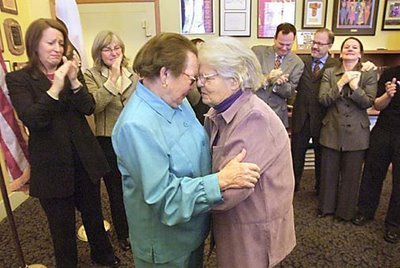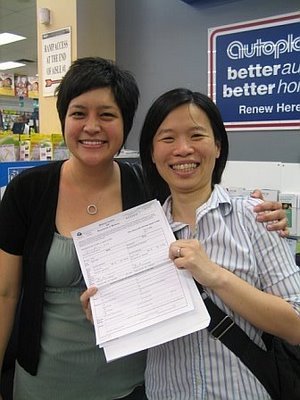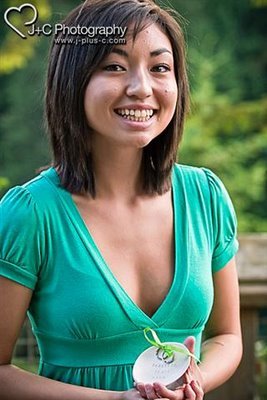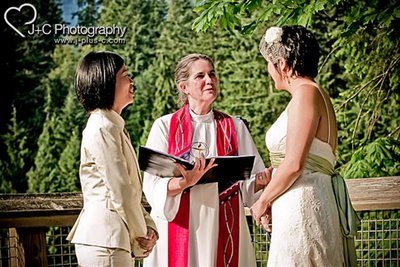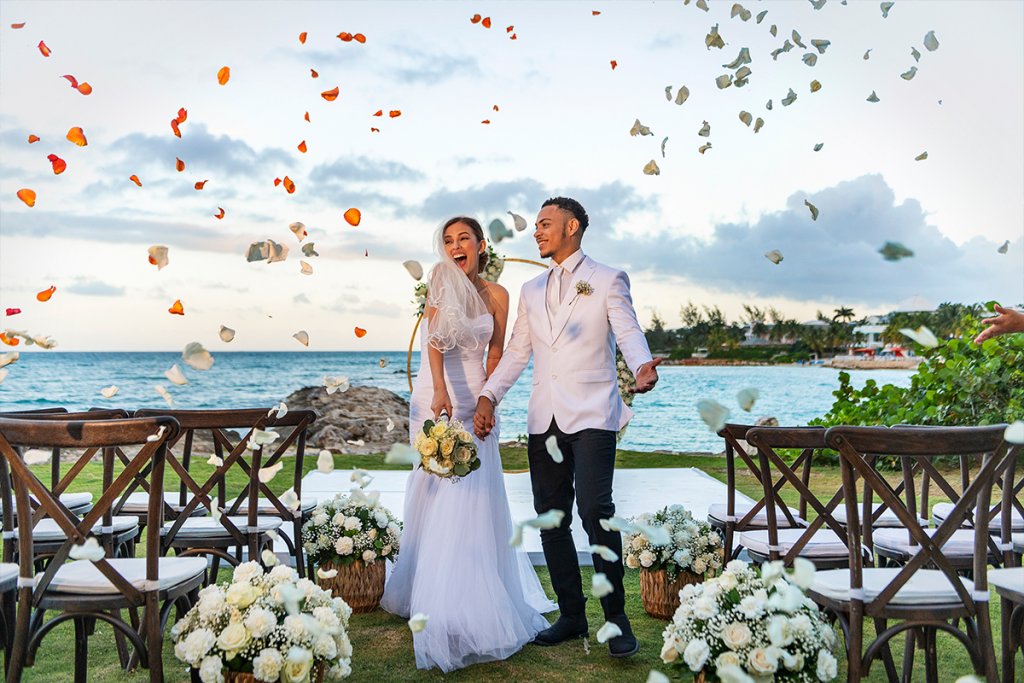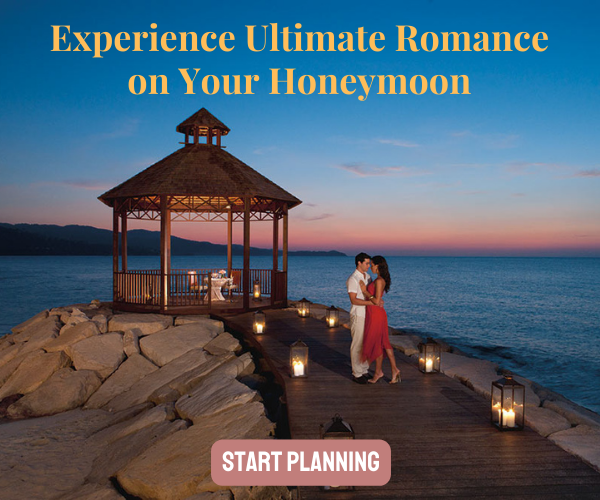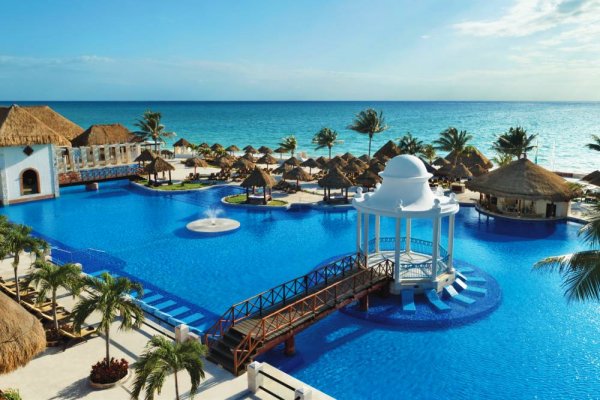My fiancé and I moved to Vancouver, BC, from California less than a year ago and started planning our wedding shortly thereafter. Planning has been a little lonely since most of our friends and family are thousands of miles away, but we were super excited to finally be able to get legally wed! You see, my fiancé and I are a same-sex couple and we've had to travel many miles to be able to stay together as a couple.
In February 2004, we watched the news with sheer glee as marriage licenses began to be issued to same-sex couples. Del Martin, 83, and Phyllis Lyon, 79, a couple that had been together for 51-years were the first to be married. Their photo was on the front page of the newspaper on Valentine's Day:
|
|
We wanted so badly to drive up and join the thousands of same-sex couples that were flocking to San Francisco City Hall. Unfortunately, we couldn't because at the time my fiancé, who is not a U.S. citizen, was on a student visa and if she showed "intent to stay" in the U.S., which getting married would, her visa could be revoked. We sent flowers to city hall, but we stayed home.
My fiancé eventually got a work visa. However, there is a time limit on how long you can stay in the U.S. as a foreign worker. Marriage offers 1,138 federal benefits and responsibilities, one of which is the right to sponsor your foreign spouse for a green card. Instead, binational same-sex couples like us are forced to live apart, out stay their visas and live outside the law, or immigrate to a country that will allow them to remain together.
Well-meaning people often suggested that she marry an American man so that she could get a green card that way, but we didn't want to go that route. I mean who wants to attend the wedding of your fiancé to another person? Not to mention that it is also illegal and we didn't want to have to live with that kind of stress and uncertainty.
Even though Massachusetts and my home state, California, legalized same-sex marriage, getting married there would not help us since immigration is a federal benefit of marriage and the federal government would not recognize our marriage.
Before we came to Canada, we put up a good fight. We went to the county clerk's office to ask for a marriage license and were denied. We wrote letters, we rallied, we marched, we made phone calls, we gave speeches, and we even went on a cross-country bus trip, "The Marriage Equality Express." None of it mattered and in the end we had to leave.
Last summer, my fiancé was offered a job with a Canadian company. We decided to go for it since this would mean finally putting an end to the uncertainty of how we would be able to remain together long term. I was allowed to immigrate with her as her common-law spouse. It was an obvious, but painful choice. We would do anything to stay together. Now we join the growing number of "love exiles" who have left the U.S. in order to remain together.
To be honest, planning our wedding is a little bittersweet. We'd prefer to be living back in California and planning our wedding with our friends and family nearby. But for now we are thrilled to live in a country that recognizes our relationship and provides us with the benefits afforded to all of its citizens. Here we are with our marriage license:
|
|
Aside from all the legal challenges, we also found planning our ceremony to be a bit tough. Initially, I went out and bought a couple of the most popular wedding planning books to guide me. I found that route to be less than helpful, what with all the references to the groom. How do two brides walk to the altar anyway? While I appreciate thinking outside of the box and personalization, I also recognize people use templates for a reason. It's difficult to make it all up as you go along! It turns out that I didn't actually have to make anything up, I just had to be creative and willing to draw from several sources. First, our officiant who is a Unitarian Universalist minister provided us with sample ceremonies that were easy to tailor to reflect us. I also turned to the trusty Internet for ideas on readings, alternatives to the bride being walked down the aisle to her groom, and even a ring warming ceremony.
|
|
My cousin served as our "official ring warmer," making sure that we got the rings back in time for the exchange of the rings.
Now that we are married, I am really happy that we did it our way because each element of the ceremony was meaningful to us. We walked down the aisle together. We didn't have a wedding party, but we found ways to involve family and friends throughout the ceremony. We used readings that reflected us as a couple: Our 12-year old niece read from Sandol Stoddard's children's book, "I Like You," my grandpa read an excerpt from "The Art of a Good Marriage" by Wilfred Arlan Peterson, and a good friend of ours read "Blessing of the Hands." We also had a ring warming ceremony as a way to involve all of our guests in the ceremony. The text is below.
"During this ceremony the couple will exchange rings. These rings are a visible sign of their commitment to one another. They have been wearing these rings for several years already, because even when they could not get legally married in the U.S., they wanted to wear a symbol of their commitment to each other. As this ceremony proceeds, we invite family and friends to take part in the warming of the rings. We ask that you wish them health and happiness, and all that is noble in life. I ask that each guest hold them for a moment, warm them with your love and make a silent wish for this couple, and their future together. When these rings come back they will contain, in their precious metal, that which is more precious, that which is priceless—your love and hope and pledge of support for their marriage."
|
|
The road to our wedding day was not a well-paved path. It involved a lot of trail blazing. But I think that this experience has definitely been good preparation for married life.
Posted by Miss Gingerbread at 12:39 p.m.
- bride-to-bride's blog
- Log in or register to post comments

